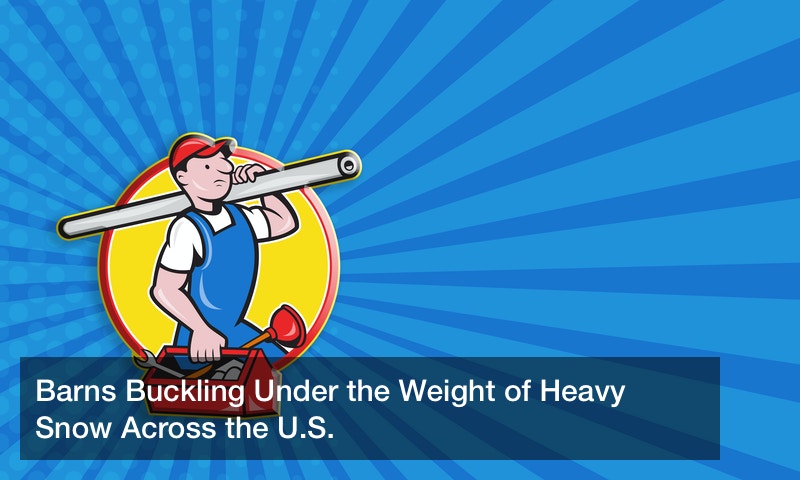Barns Buckling Under the Weight of Heavy Snow Across the U.S.

No one wants a roof to collapse, and when it happens to a home or a school it is even more terrible for everyone involved. If you need a roof repaired or replaced, you need to call a roofing company that has a lot of experience in roofing and has a good reputation amongst its customers. A good roofing company will know the best way to shingle a roof and can do it faster than a company that has less experience. They may also be able to get you a better price since they can do it quicker than the competition.
Look for reviews of roofers online to see what people say about their company and how well they install roofs. You might even be able to buy roofing supplies to make the roofing process less expensive. But if you can do that, can you fix your own roof? For some buildings, it may be possible. For others, it may take a professional team to be able to fit it with a roof correctly. If you’re looking for cheap roof installation, never choose the cheapest bid just to save money. A bad roof will cost you a lot.
The harsh cold and snowstorms that pounded the United States through January and February resulted in lots of car wrecks on icy roads and even slowed economic growth. But one victim if the cold that might be overlooked is cows! In multiple areas across the country, heavy snows proved to be too burdensome for barns and roofs collapsed. As a result, a number of cows were injured and some even met unfortunate deaths.
At Jens Gold Farms near the small town of Amery, Wisconsin, a large section of the roof of the free-standing barn collapsed under the weight of snow and pressure of high winds. Luckily, all of the 90 cows housed there were able to escape with their lives, and only a handful suffered cuts and scrapes.
“I don’t know how they escaped,” said Teressa Jensen, who farms with her husband and daughter. “Luckily, they were still at the bunk eating or it would’ve been a lot worse.” The family called for some help and worked until nearly 2 a.m. to clear debris and move cows back into their stalls.
A similar scenario in Framingham, Massachusetts was a bit more tragic. When a 40-by-60 foot structure collapsed at Eastleigh Farm, two cows were killed and another four were injured. After finding the fallen building at 6:30 a.m., farm workers called firefighters and neighbors and, after making sure all workers were accounted for, got help from the Animal Rescue League to treat the four wounded animals.
After cleaning the area and making sure all of the cows were safe, Talis Thorndike, a worker at the farm, said wearily, “Thank you for the fire department, thank you to the neighbors. Everyone was amazing.”
With the cows at both locations safe and accounted for, the challenge for farmers will be repairing structures, if not replacing them entirely. It is hard to prepare for weather as severe as this winter, and it was certainly unforeseen.
“This is a winter that we haven’t seen in the last 40 years that I can remember,” said Ken Gonske, whose Wisconsin barn also fell. “There’s been no break from November all the way.”
“The snow is up to the handle on the shovel,” he added. “Where do you start when your roof area is two-thirds of a football field?”
Though Gonske emphasizes that this winter was rare, farmers across the country will have to think about strength and how to handle the weather as they rebuild. New materials will help, but those who were affected by the snow might consider stronger structures and designs.
“One thing that people can do is to go with a shed model with a steeper roof pitch,” explains Mike McCort, owner of Amish Mike. “The snow will melt faster off of anything that’s got a steeper roof. Structural wise, one of the things that we do is to use all plywood and 2×4 construction. That makes a big difference as far as the structure and the integrity of the building. A lot of people use particle board, and we don’t use that stuff. If that gets any kind of moisture on it, it’s going to go right through it.”
Related:
suring school roof collapse.







